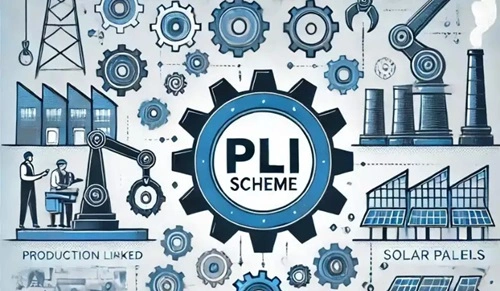In a strategic move to bolster its steel industry, the Indian government has announced a new Production Linked Incentive (PLI) scheme with an outlay of ₹4,300 crore. This initiative aims to enhance domestic manufacturing, reduce import dependency, and position India as a global leader in specialty steel production.
Objectives of the PLI Scheme

The primary goals of the scheme include:
- Boosting Domestic Production: Encouraging the manufacturing of specialty steel within the country to meet rising domestic and international demand.
- Attracting Investment: Drawing significant capital investments into the steel sector to modernize infrastructure and technology.
- Employment Generation: Creating job opportunities by expanding the steel manufacturing ecosystem.
Key Features of the Scheme
The PLI scheme focuses on five categories of specialty steel:
- Coated/Plated Steel Products: Used in automotive and consumer goods industries.
- High Strength/Wear Resistant Steel: Essential for construction and heavy machinery.
- Specialty Rails: Critical for railway infrastructure.
- Alloy Steel Products and Steel Wires: Utilized in engineering and manufacturing sectors.
- Electrical Steel: Vital for electrical appliances and transformers.
The scheme offers incentives ranging from 4% to 12% on incremental production, encouraging manufacturers to scale up operations and invest in advanced technologies.
Expected Outcomes
The government anticipates that the PLI scheme will:
- Attract Investments: Approximately ₹40,000 crore in the specialty steel sector.
- Increase Production Capacity: Add 25 million tonnes of specialty steel by 2026-27.
- Generate Employment: Create around 525,000 jobs, including 68,000 direct employment opportunities.
- Reduce Imports: Significantly decrease the import of specialty steel, saving foreign exchange and promoting self-reliance.
Industry Response
Leading steel manufacturers have expressed optimism about the scheme. Major players like Tata Steel, JSW Steel, and SAIL are expected to participate actively, leveraging the incentives to expand their specialty steel production capabilities. The scheme also opens avenues for small and medium enterprises (SMEs) to enter the specialty steel market, fostering a more diversified and competitive industry landscape.
Challenges and Considerations
While the PLI scheme presents significant opportunities, the industry must address challenges such as:
- Technological Upgradation: Investing in state-of-the-art technology to meet global quality standards.
- Skilled Workforce: Developing a skilled labor force capable of operating advanced manufacturing processes.
- Environmental Compliance: Ensuring sustainable and eco-friendly production methods to meet environmental regulations.
Conclusion
The introduction of the ₹4,300 crore PLI scheme underscores the Indian government’s commitment to strengthening the steel sector. By incentivizing the production of specialty steel, the scheme aims to reduce import dependency, boost domestic manufacturing, and create employment opportunities. As the industry gears up to embrace this initiative, India’s position in the global steel market is poised for a significant leap forward.

